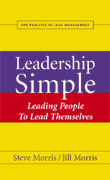Originally Published at Library Garden
Kate Sheehan had a wonderful post a week or so ago, Customer Service Mind, Beginner Mind, in which she writes about the value of looking at things with a fresh eye. It reminded me that every time I ever started a new job, I was hyper-aware of all the wacky things about my new organization; the signs that had been taped to the door since 1973: the restrictive (or just plain arbitrary and weird) policies that seemed to have no rhyme nor reason; the lack of basic equipment available for staff (no sliderules or abaci, but close.)
These awarenesses weren’t always negative. Sometimes I was aware of the amazing benefit package that everyone else seemed to take for granted (or even grumble about) ; or an incredibly efficient work flow or communication mechanism — like a wall in the staff room with everyone’s picture (Facebook 1.0), or a Director that was actually available to speak with employees.
 But no matter how strong or strange these awarenesses were, they always faded away within the first few weeks on the job. It didn’t take long before my new environment would simply register as “normal.” Seriously, there could have been a chimpanzee in a tuxedo singing the star-spangled banner in the lobby; but if he was there on day 1 and day 2, by day 3, I’d be nodding and saying, “morning George, you sound good today. Nice job on the bowtie…” In other words, I can’t underestimate the power of our brains to adapt and reset the benchmark for normal experience.
But no matter how strong or strange these awarenesses were, they always faded away within the first few weeks on the job. It didn’t take long before my new environment would simply register as “normal.” Seriously, there could have been a chimpanzee in a tuxedo singing the star-spangled banner in the lobby; but if he was there on day 1 and day 2, by day 3, I’d be nodding and saying, “morning George, you sound good today. Nice job on the bowtie…” In other words, I can’t underestimate the power of our brains to adapt and reset the benchmark for normal experience.
I always thought that those first few weeks as a new employee, when everyone told me everything and more, but no one asked me for MY thoughts or impressions, were a wasted opportunity. So when I became a department manager I made it part of the orientation process to squeeze these observations out of all new employees. I would literally take new employees to lunch and tell them that for the next few weeks, their perceptions were extremely valuable and encourage them to share with me if there was ANYTHING that we did that seemed odd, inefficient, wasteful, or stupid. Or amazing, creative, and blazingly brilliant.
If you can manage to get this data — heck, even one tiny piece of datum — from your new employees (give them a break now and then from reading the 250 page employee manual), you’ll have gotten some very useful information. So. Submitted for your approval, here are my Top Ten Questions To Ask Every New Employee. [drumroll please…]
- What was your first impression when you walked into the library?
- What are your impressions of the aesthetic environment inside the building? What could we do to improve it?
- What are your impressions of the aesthetic environment outside the building? What could we do to improve it?
- What are we doing that strikes you as wasteful — of time or money?
- What services are you surprised to learn that we are offering, for better or worse?
- What services are you surprised to learn that we are NOT offering, for better or worse?
- Are there any policies that you don’t understand the rationale for? Are there any policies that strike you as just plain nuts?
- What are your impressions of our website?
- What was your experience like when you called the library? What are your impressions of our phone system?
- What are your impressions of our customer service orientation? Are we customer-focused? What could we do to be more so?
BONUS QUESTIONS (for the brave ones out there)
- How friendly (or unfriendly) did the staff seem when you first walked in the door?
- What are we doing that strikes you as straight-up bat sh*t crazy?
If you consistently ask these questions of your new employees, you’ll have a wonderful opportunity to recapture the newness of seeing, if only briefly, through borrowed, “beginner mind” eyes.








